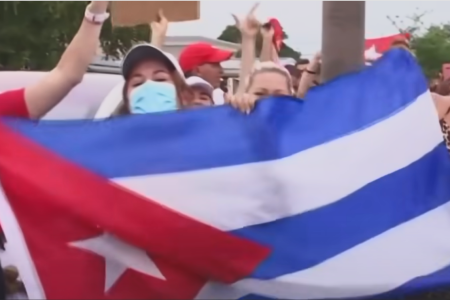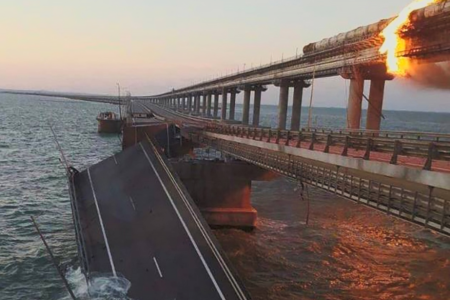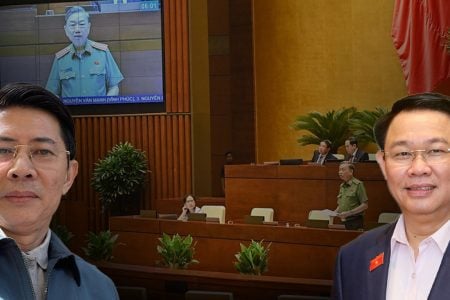
The fact that China has sent hundreds of ships anchored for a long time at Whitsun Reef in the Truong Sa (Spratlys) raised tensions in the South China Sea (Vietnam calls it the East Sea). An important question arises: Which country Whitsun Reef belongs to?
Vietnam and the Philippines, two of the countries with sovereignty claims in Spratlys, have spoken out against China’s allowing many fishing vessels to be anchored at Whitsun Reef in the Union Bank cluster in Spratlys also as the alleged actions of Beijing to threaten the smaller states of the region.
So in fact, Whitsun Reef is under the sovereignty of which country?
BBC News Vietnamese spoke with a number of South China Sea experts at the Dai Ky Su Bien Dong Project, an independent research project in Vietnam, to explore this issue.
Determination of territorial sovereignty
Whitsun Reef is a shoal located in Spratlys, where there is a dispute in whole or in part between the parties of Vietnam, the Philippines, Malaysia, China, Taiwan, and Brunei.
Shoal is the common name of a low-tide elevation (LTE) entity, which, according to Article 13 of the 1982 United Nations Convention on the Law of the Sea (UNCLOS), is a naturally formed ground, completely submerged during high tide but rises above the surface during low tide.
Since the Philippines suddenly emerged as a claimant to Whitsun Reef, in order to determine the sovereignty of LTE, Ph.D. Van Pham from the Dai Ky Su Bien Dong Project cites the Philippines’ stance on the legal status of real estate. High tide submersible was presented in the hearings at the South China Sea Arbitration Court 2016, with the following points:
– The submerged entity is not a territorial territory, and therefore, without any means of occupation or control, can establish sovereignty separately from these entities;
– a high tide submerged entity is within 12 nautical miles of a high tide floating entity, the sovereignty of that high tide submerged entity will belong to the sovereign state over the high tide floating entity;
– When a high-tide submerged entity is completely outside the 12-nautical mile range, but within the exclusive economic zone or continental shelf of a state, that state enjoys exclusive sovereignty and jurisdictional rights over the entity subject to high tide are within the scope provided for in Articles 56 (3) and Article 77 of UNCLOS.
– When the submerged entity is located at a greater distance, beyond areas under national jurisdiction, it will be part of the deep seabed and the subject of part XI of the Convention, any owner can exercise any title or any other right to or related to it.
From those pieces of evidence, Dr. Van Pham came to the following:
“Thus, on the position of the Philippines, if applicable to the specific case that Whitsun Reef lies within 12 nautical miles of Grierson Reef, so Whitsun Reef will be under the sovereignty of the sovereign state with Grierson Reef.”
The arbitral tribunal of the South China Sea’s sue in 2016 has a similar opinion to the Philippines’s one.
Citing the 2012 lawsuit between Nicaragua and Columbia, the Court noted that the high-tide submerged entity was not part of the legal territory, but only part of the submerged land. Hence the entity that is submerged at high tide is not subject to claim. The entity that is submerged in high tide lies in the territorial sea of a country, will be under the sovereignty of that state, through that state’s sovereignty over the territorial sea.
More specifically, although the Tribunal concluded that Subi Reef, Thomas Second Shoal, and Mischief Reef were all submerged entities at high tide, they belonged to two different types of legal statutes. The court concluded very specifically that Xu Bi lies within 12 nautical miles of the high tide Sandy Cay floating entity west of Thitu Island, and will be under sovereign sovereignty over that floating entity. However, because the Court did not have the authority to resolve the sovereignty issue, the Court was unable to conclude which country it was, according to Dr. Van Pham.
Meanwhile, the Court concluded that Second Thomas Reef and Mischief Reef are not within the territorial sea of any high tide, but within 200 nautical miles of the Philippine baseline, and thus constitute part of the exclusive economic zone and continental shelf of the Philippines.

There is another case, if LTE but for natural reasons become a protruding entity during high tide, the determination of sovereignty will also change.
Dr. Van Pham cited the Arbitral Tribunal’s Judgment against the South China Sea 2016 recognizing the case of McKennan Reef, an entity located 1 nautical mile from Tu Nghia (Hugh Reef).
Originally, McKennan Reef was a submerged entity at high tide. Over time, there was a band of sand naturally accreted by the storm and the Court used the most recent survey data prior to human intervention. Article 121 defines islands/rocks as naturally formed objects that float at high tide. Since then, the Court concludes that McKennan Reef is a floating entity at high tide created by a storm.
From there, a country that has sovereignty over this entity can claim a territorial sea of 12 nautical miles and all LTE inside, including Hugh Reef.
The sovereignty of Whitsun Reef
Whitsun Reef is the largest coral reef in the Union Banks cluster and is located at the northeastern end of the cluster, shaped like a boomerang.
Geographically, the Union Banks cluster is located near the center of Spratlys, the distance to the farthest entities in this archipelago in directions is from 100 to 150 nautical miles. In addition, the Union Banks cluster is also quite close to Ba Binh Island (controlled by Taiwan); Nam Yet Island (Namyit Island controlled by Vietnam), and Bai En Dat.
China claims sovereignty over nearly the entire South China Sea, with its 9-dash U-shaped line claim and administrative decisions, including the decision to establish San Sha, an administrative level governing the entire archipelagos the Hoang Sa (Paracels), Spratlys, and many other entities in the South China Sea. China’s latest moves at Whitsun Reef lie in its long-term sovereignty strategy.
At the same time, the Vietnamese and the Philippines have different stances and approaches towards the entities in Spratlys, but each country considers Whitsun Reef under its own sovereignty. So in fact, which country has the strongest legal basis for sovereignty in Whitsun Reef?
Dr. Van Pham, citing the previous maritime surveys as well as the Philippines survey, said that Whitsun Reef is a submerged entity at high tide. Whitsun Reef is about 6 nautical miles from Grierson Reef, a floating geographic feature at high tide according to UKHO documents and Philippines survey.
As analyzed above, Whitsun Reef belongs to the territorial sea of Grierson Reef, not the exclusive economic zone and continental shelf of another country.
And so, Grierson Reef belongs to the sovereignty of which country has sovereignty over Grierson Reef.
Vietnam has stationed on Grierson Reef since 1978 and asserted sovereignty in Grierson Reef. The Philippines, China, and Taiwan all have sovereignty claims.
According to Dr. Van Pham, international law values true peaceful possession. National practice and the process of resolving territorial disputes in a court with jurisdiction over territorial sovereignty issues show that the court will consider the legal record of the stronger party will determine sovereignty belong to that party.
Based on international law and legal evidence, history, and really peaceful occupation, Vietnam is the party with the strongest legal basis to assert sovereignty over Grierson Reef and other the entity is submerged at high tide, the features are within 12 nautical miles of the island, including Whitsun Reef, according to Dr. Van Pham.
Thoibao.de (Translated)




























